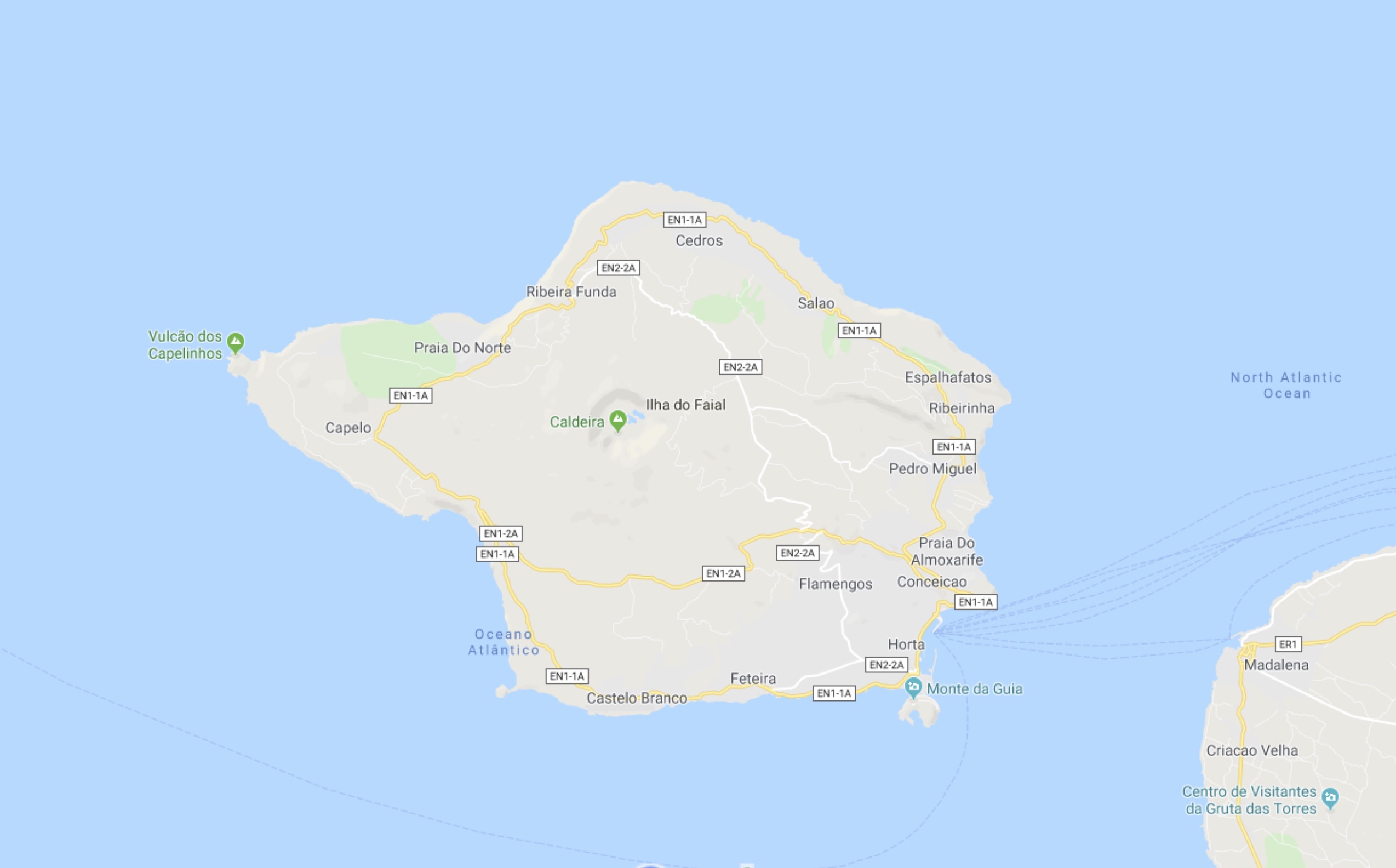
With 19.8 km in length and 14 km in maximum width, the 173.1 km2 of surface of Faial Island, in the Azores, have an almost pentagonal shape. It is the third most inhabited island in the archipelago, with 14,994 residents (data from 2011).
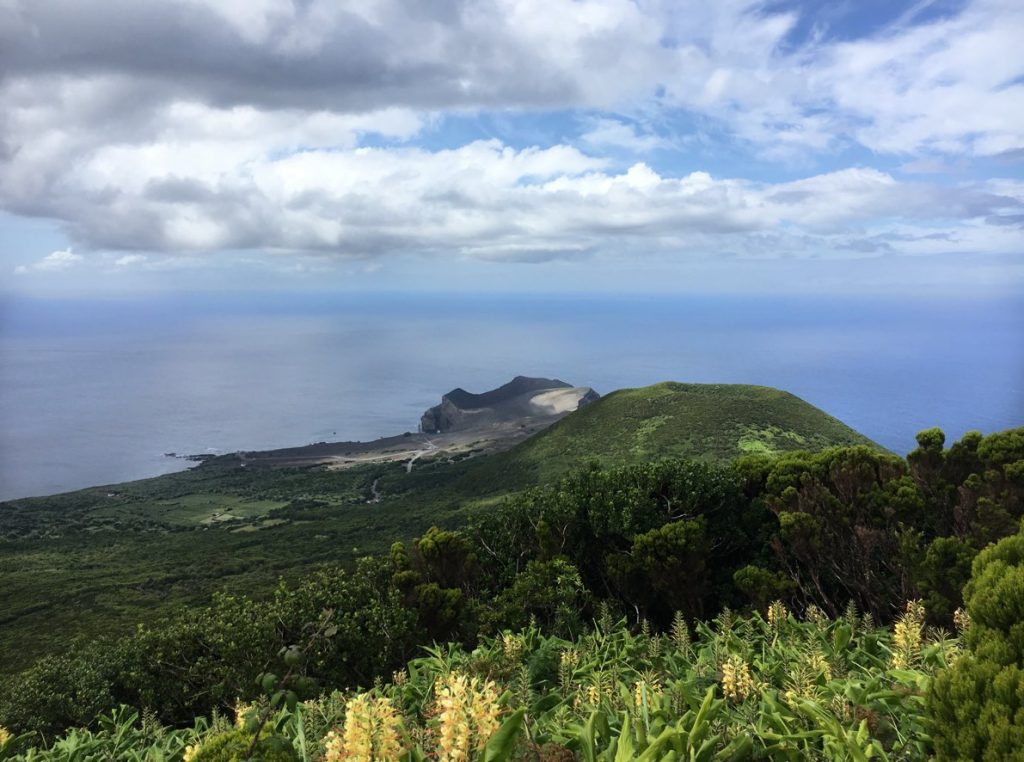
Faial Island is part of the Central Group and is the westernmost summit of the so-called “triangle”; the others are São Jorge and Pico, which is 6 km away. The highest point of the island (1043 m.) Is located at Cabeço Gordo, in the Caldeira area, at 38 ° 34’34 ” north latitude and 28 ° 42’47 ” ‘west longitude.
HISTORY
The Portuguese are believed to have discovered Faial after Terceira. The name probably derives from the many specimens of Morella Faya that were there (it is a tree which in Portuguese is precisely called faia-da-terra).
The first official populations, of Flemish and Portuguese origin, arrived on the island around 1465, during a first and fruitless expedition, in search of tin and silver.
Two years later, the Flemish nobleman Josse Van Huertere returned to Faial Island and, attracted by the fertility of the soil, became capitão do donatário (a position similar to that of governor), dependent on Portugal, in 1468. Authorized by King D. Afonso V, he brought new colonists from Flanders: these, before settling in Horta, initially lived in Vale dos Flamengos (ie ‘Valley of the Flemings’).
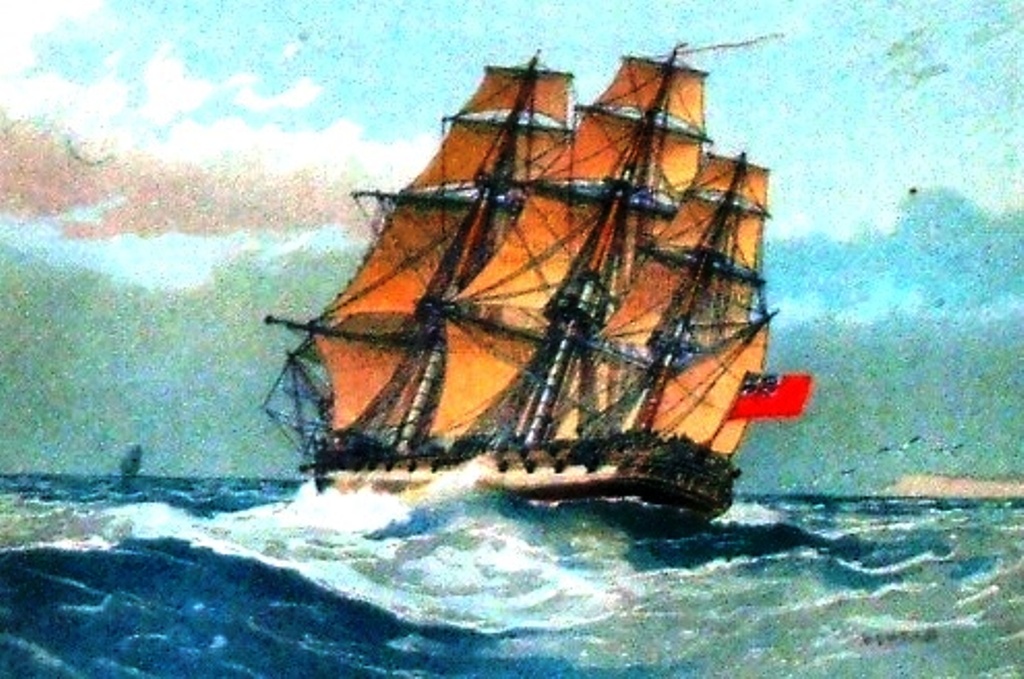
They introduced the cultivation of Roccella tinctoria to the island. The exports of this plant, from which a colarant was obtained, and those of wheat, then represented the basis of Faial’s economy. The Spanish occupation, in 1583, and the attacks by the corsairs, especially the French and the English, led to a period of dilapidation of the island’s heritage and wealth. The volcanic eruption of 1672-1673 also caused great destruction in the northwestern area.
Well-being returned in the seventeenth century, after the restoration of the Portuguese monarchy, thanks to the port. Horta became a platform between Europe and the American continent, thanks to its sheltered inlet and the export of wine produced on the island of Pico. This product, like the wine and brandy of the São Jorge and Graciosa grapes, was marketed in Portugal and the rest of Europe, and also in the British colonies. During the eighteenth century, Faial also experienced the cycle of production and export of oranges, a source of wealth for the whole archipelago. The port of Horta lived its golden age, given that all steamships that crossed the Atlantic and the North American whaling fleet made a stop there.In the mid-nineteenth century, a decade was enough for pest diseases to decimate vineyards and orange groves. However, thanks to its location, the island was transformed into a telecommunications nerve center. The transmission of information between North America and Europe was carried out by submarine telegraph cables attached to the city of Horta, whose inaugural network dates back to 1893. Subsequently, various international companies installed submarine cables that connected the continents passing through the island. And, at the beginning of the twentieth century, precisely in 1915, Faial acquired an even greater importance thanks to the construction of the Meteorological Observatory, located in Horta.
Aviation also exploited the privileged position of Faial Island, which was in fact the stopover of the first seaplanes that crossed the North Atlantic: the first of them arrived in Horta immediately after the end of the First World War, in 1919. Between 1930 and 1940 , important German, British, French and North American airlines chose the island as a landing place for their hydrofoils.
This privilege granted by geography is still the prerogative of the island today. The marina of Horta, inaugurated in 1986, is one of the most famous in the world. With the establishment of regional autonomy, the city of Horta has become the seat of the Azores Regional Parliament, and has shared all the economic alterations of the archipelago, developing, like the remaining islands, mainly the tertiary sector.
NATURE:
THE BLUE ISLAND
From the viewpoint of Cabeço Gordo, the highest point on the island, the terrain seems to gently descend to the sea; a profusion of hydrangeas continues the tones of the waters on the ground, and materializes the wedding between the blue of the flowers and the green of the vegetation and pastures.
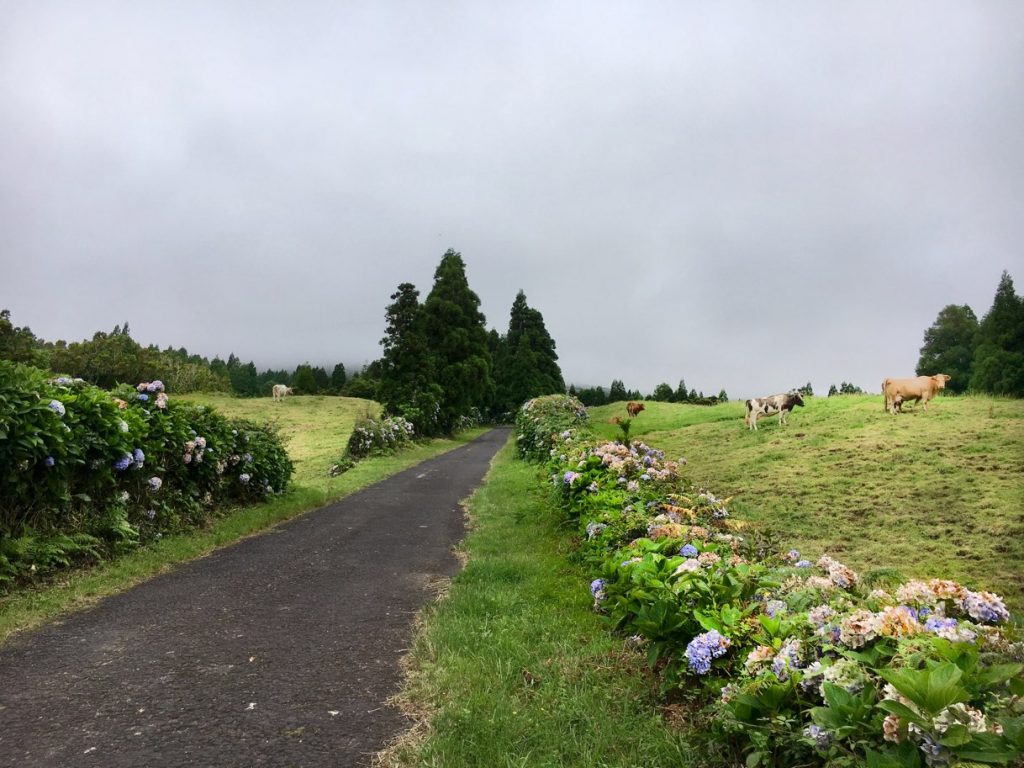
The same landscape can be found on the road leading to Caldeira, in the center of the island, and on other paths and roads of Faial Island, justifying the nickname of ‘Blue Island’. But all this vanishes at the Capelinhos volcano, where the landscape is arid and wild, of an absolute grayness that arouses great amazement.
VOLCANIC LANDSCAPES
Genetic symbol of the island, Caldeira (‘boiler’) amazes for its immensity and for the revisiting of flowers, plants and trees that glisten in the sun. The walls of this volcanic depression, with a perimeter of seven kilometers, are covered by Morella faya, Azorean laurel, moss, ferns and other endemic species. At the bottom, 450 meters below the Caldeira viewpoint, an intermittent pond and a small volcanic cone, covered with the remains of the primitive Laurisilva forest, cover the landscape with an exciting chromatic play.
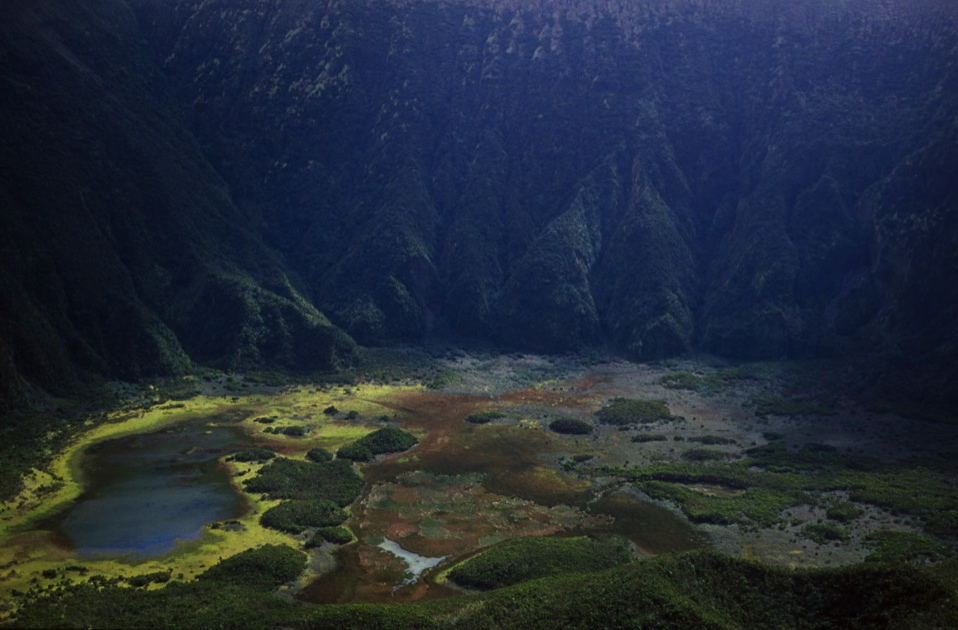
On the western end of the island, the Capelinhos volcano rises majestically, witness of the last eruption that occurred in the Azores, which added land to the land that already existed. Entering this area is like landing on the lunar surface: the gray ash and volcanic waste emitted between 1957 and 1958 is only now beginning to be invaded by the green vegetation, which stubbornly tries to colonize this new territory. On the steep coasts of Capelinhos and Costado da Nau the bowels of these volcanoes are visible, in a sequence of rocks, stratifications and contrasting profiles, forming a surprising play of colors and thicknesses.A destination of excellence for the international scientific community, the Capelinhos volcano forced to emigrate that part of the population of Faial to whom the heavy workmanship of destroyed houses, land and plantations fell, in a scenario of calamity that the old lighthouse silently witnessed. In our day, the tower, no longer illuminated, is part of the magnificent Interpretation Center, equipped with the most modern multimedia exhibition techniques. The visit to this center ends by climbing to the top of the lighthouse, an unparalleled visual and emotional experience.
Faial Island offers viewpoints from which you can have a privileged glance over the surrounding islands. From the ruins of the Ponta da Ribeirinha lighthouse, destroyed by the 1998 earthquake, you can see the profile of the São Jorge volcanic back. In front of the Ponta da Espalamaca belvedere, near the monument dedicated to Our Lady of the Conception, and in front of the entire bay of Horta, the majestic mountain of Pico rises. From Cabeço Gordo, in the days of good weather and clear horizon, the gaze manages to embrace all the islands of the triangle and the island of Graciosa.
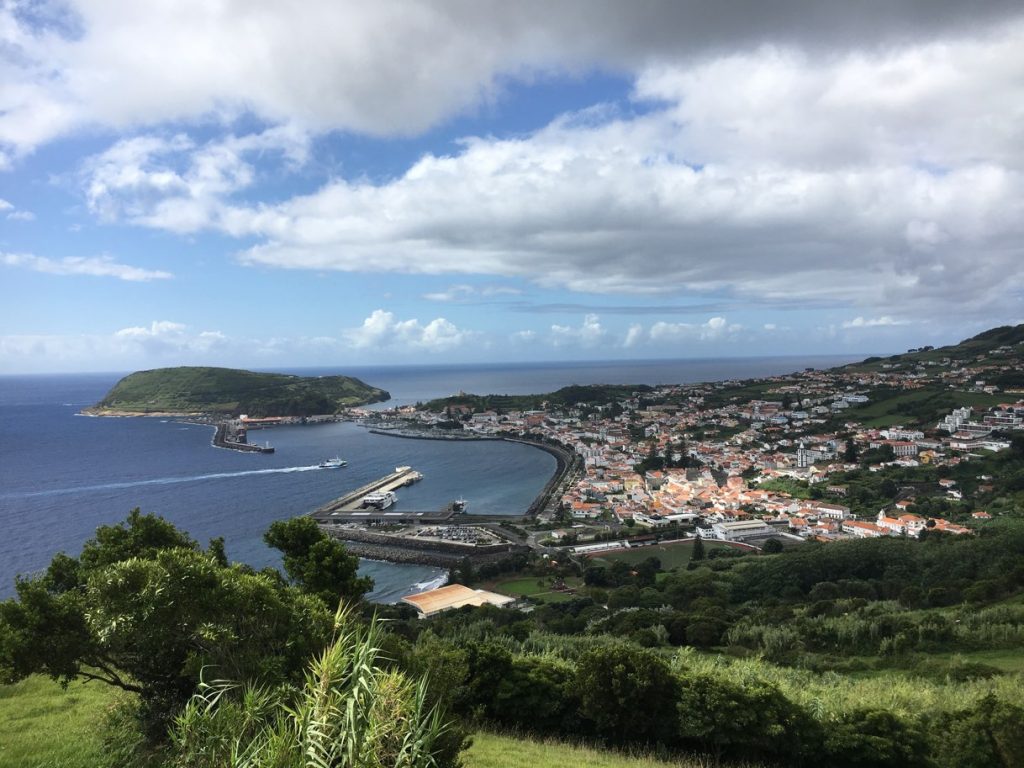
Inside, extensive pastures climb the slopes of the Caldeira elevation, interspersed here and there with woods and arboreal spots. This natural landscape coexists with elements that testify to human presence: some typical red-painted windmills, the cultivated and flowered fields of Vale dos Flamengos, or the hedges of hydrangeas carefully aligned along the paths or used as delimitations of the land.
Halfway between Castelo Branco and Varadouro, by the sea, there is a large rock surrounded by water and populated by sea birds. It is the Morro de Castelo Branco (‘hill of the white castle’): it is in fact formed of white trachytic rock, and its shape recalls that of an impregnable fortress.
COAST
Among the ‘islands of the triangle’, Faial has the largest number of volcanic sand beaches: Porto Pim, Praia do Almoxarife and Praia do Norte invite to refreshing sea baths. The east coast looks like a stepped inclination, now elevated now almost at sea level, due to the powerful tectonic forces that divide it into various large blocks.
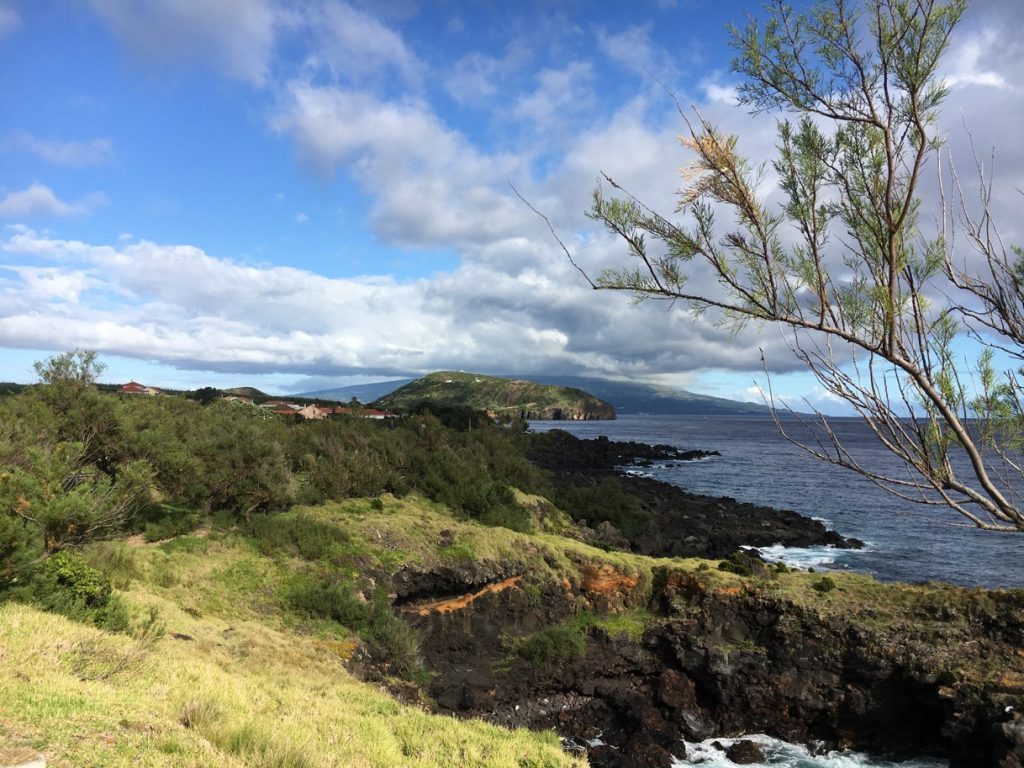
On the western side, the coast is dominated by the imposing cliffs between Ribeira Funda and Praia do Norte, and by those that are located between Morro de Castelo Branco and Varadouro: they plunge into the sea almost sheer, then giving rise to the rocky cliffs of the peninsula of Capelo, stretching towards the west and corresponding to the geologically most recent area of the island.
ATTRACTIONS
Very suitable for bathing practice, the beaches of Porto Pim and Conceição complement Almoxarife beach, a long dark-colored beach with a privileged view of the Pico mountain.
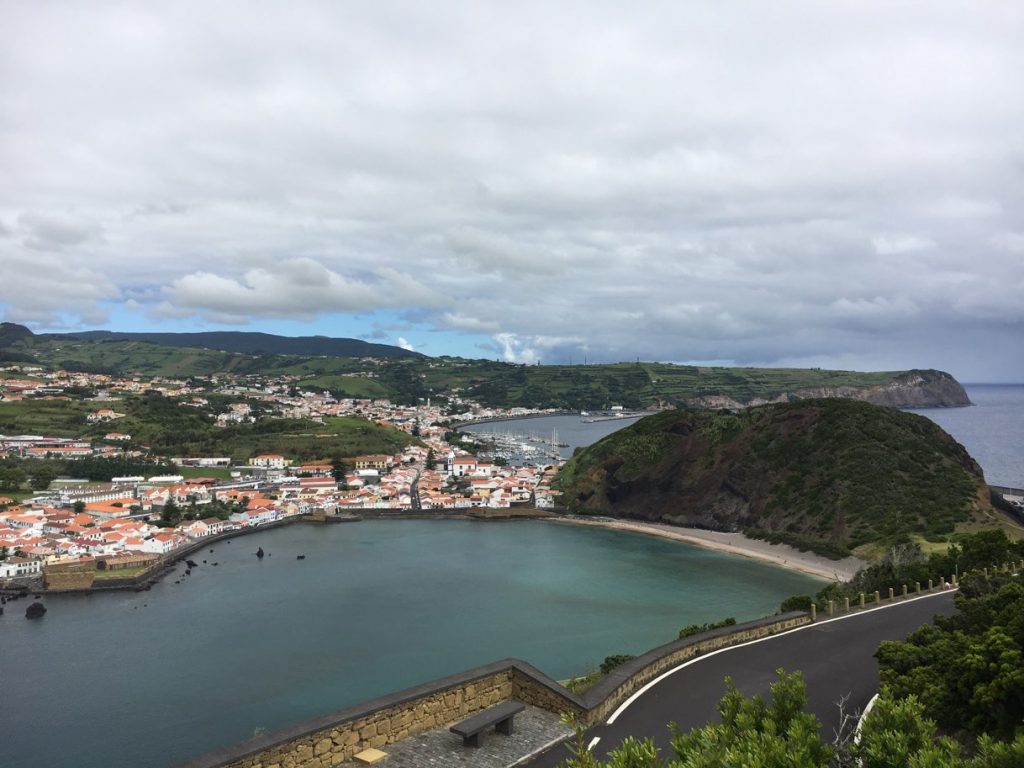
In the Varadouro area, the bay houses a natural swimming pool between the caves and the rocky points of black lava. Numerous hiking trails, the area of the Capelinhos volcano, the caldera with its beautiful rain lakes on the bottom, which can be reached with a trekking accompanied by guides, are a must.
HERITAGE AND CULTURE:
ARCHITECTURE
The natural amphitheater composed of the creeks of Horta and Porto Pim, around which the inhabited center develops, and various buildings in the city of Horta can be admired from the observation posts located on Monte da Guia and Ponta da Espalamaca.
The imposing church of São Salvador stands out, with its richly decorated interior in carved wood covered with gold and azulejo panels. The architecture of the houses denotes the international spirit and the centuries-old cosmopolitan character of the island. In the twentieth century, the houses built to house the communities of English, Germans and French who worked at telegraph and cable communication stations were added to the most ancient testimonies of this cosmopolitanism. The eclectic environment continues to be a prerogative of Horta, where the legendary Peter Cafè Sport is located, a meeting place for travelers and sailors from all over the world.
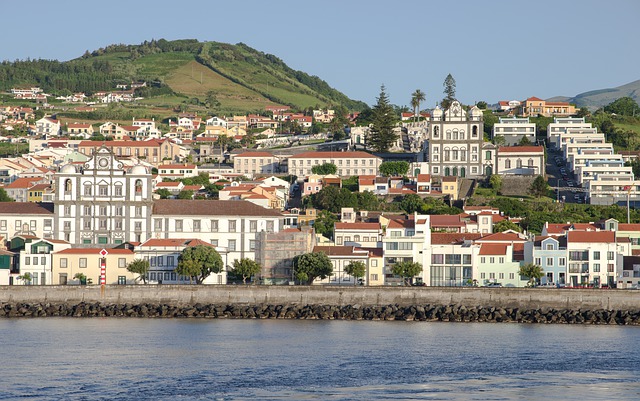
The tangle of streets and alleys accompanies the hill and descends to sea level, merging onto the promenade and ending at the tourist port of Horta. This nautical infrastructure, inaugurated in 1986, is the modern extension of a port and bay with centuries-old importance. Tradition has it that all navigators leave a painting here on the gray concrete of the pier: if you do, the boat will arrive safely at its destination, so the journey can be resumed in a happy mood, after having done your duty! And this is why those who arrive at the marina find themselves in front of an open-air art gallery: the whole world is placed on the pier of an Azorean port, represented by colorful and creative drawings and paintings.
CULTURE
Although doubts exist about Manuel de Arriaga’s birthplace, it is certain that he was born into an aristocratic family from Horta. He studied Law in Coimbra and later acquired political notoriety, becoming one of the most important ideologues of the Republican Party. In 1911, this Azorian lawyer was the first President of the Portuguese Republic.
Part of the history of Faial Island can be known by visiting the Museum of Horta, installed in the ancient Jesuit College, thanks to its documentary, ethnographic, photographic and artistic collections. In the buildings of what was once the Fábrica da Baleia in Porto Pim, a museum complex currently operates, which displays machines that are no longer in use and a varied collection of tools related to whaling. And, anchored at the Peter Cafè Sport, the Scrimshaw Museum displays a precious collection of objects in whale tooth and bone, carved or worked in bas-relief, witnesses of an era in which whales were the source of income for many families of the archipelago and the inspiration of local craftsmen.
CRAFTS
The works made in Faial Island in fig marrow are so famous that the Horta Museum has a room entirely occupied by the bequest of Euclides Rosa, a great master and popularizer of this art. The motifs of the delicate objects are varied, representing flowers, boats, animals and relevant buildings. The Capelo School of Crafts tries to preserve and energize the talent of the local artisans, which is also expressed in fish scales flowers and embroidery in straw threads on tulle.
FESTIVITY
On June 24 a feast in honor of San Giovanni begins, dating back to the times of the colonization of the island by nobles who came from Terceira. The pilgrimage converges the philharmonic of the whole island towards the Largo Jaime Melo, where there is the chapel erected by these gentlemen devoted to the saint
Concerts, folkloric dances and popular parades make this day particularly festive, and families or groups of friends bring their picnic baskets to eat outdoors, or go to small trattorias to taste the delights of local gastronomy.
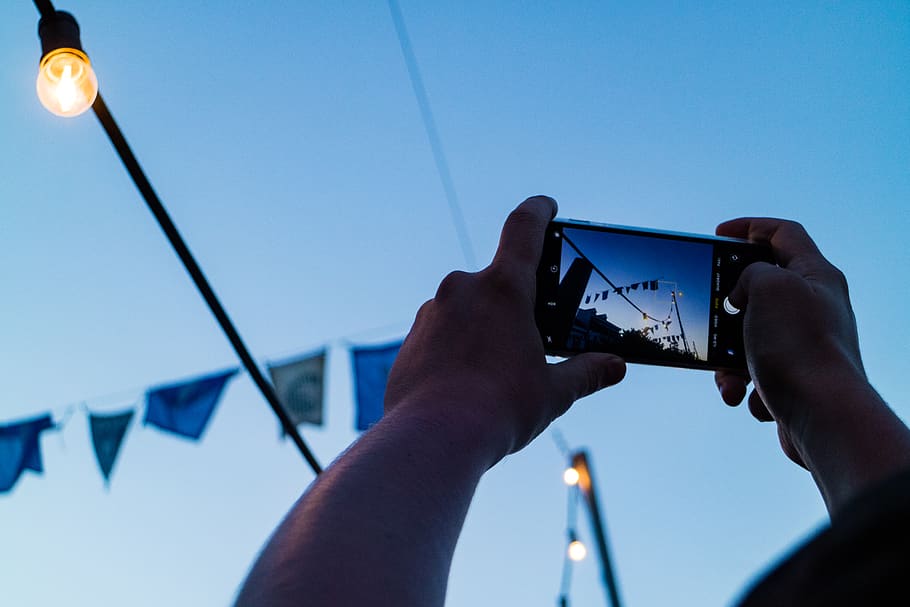
Although the feast of the Holy Spirit is also traditional in Faial, the great religious manifestation of the island is the feast of Nossa Senhora das Angústias (‘Madonna delle Angosce’). The procession and popular celebrations fill the streets of Horta on the sixth Sunday after Easter, according to a tradition that dates back to the times of the population, paying homage to a statue from Flanders. On February 1st of each year the municipality makes a secular vow, with procession and prayers in the church of Nossa Senhora da Graça, in Praia do Almoxarife. This ritual dates back to 1718, when people were terrified of the volcanic eruption that took place in Santa Luzia, on the island of Pico.
In August, the blue of the sea dominates the holiday. On day 1, commemorating the feast of Senhora da Guia, a procession of boats escorted the statue of the Virgin from the beach of Porto Pim to the port of Horta. The animation continues with the Week of the Sea. Initially dedicated to yachters, the party is now shared by locals and visitors. The conspicuous program of activities includes musical performances, craft exhibitions, gastronomic fair, whaleboat regattas and various water sports competitions that make the bays of Horta and Porto Pim very lively.
GASTRONOMY
The octopus in the pan cooked in wine, common to other islands of the archipelago, is one of the most typical dishes of Faial Island. At the table, the predominance of the sea is revealed in the fish broth and in the warmirada (stewed fish).
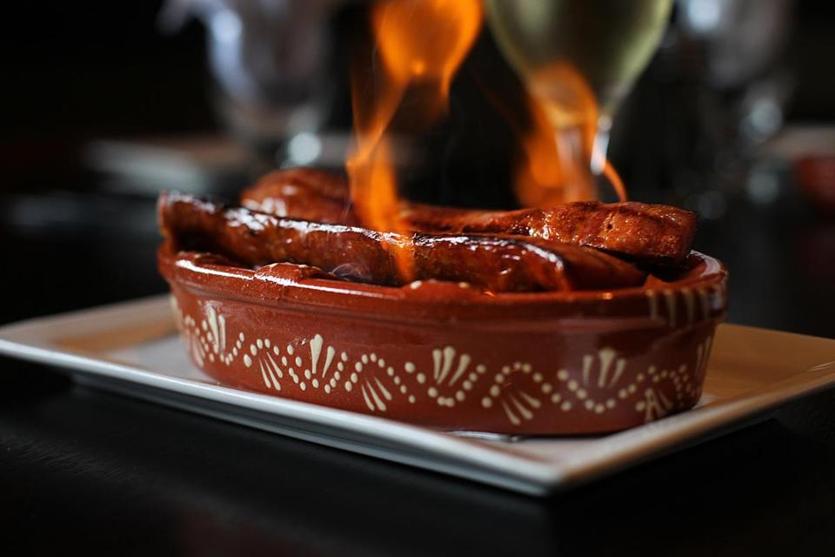
Bread and corn cakes are the right accompaniments. As for meat, morcela and linguiça can be a snack or a meal, but in the latter case they are served with yam. The recipe for molha de carne (a kind of ragù), includes spices such as pepper, cumin and cinnamon to flavor the generous sauce in which beef is cooked. Among the desserts, fofas are typical: the fennel-flavored pasta cakes are baked in the oven before being filled with a cream based on egg yolks, milk, sugar, flour and lemon peel.








